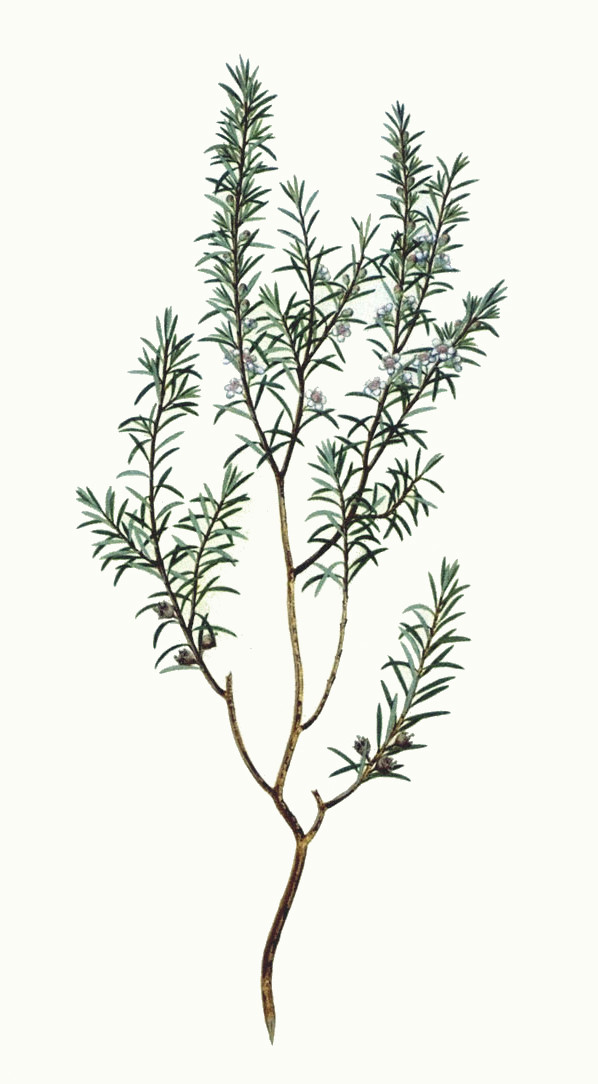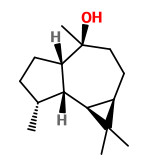Kunzea ericoides (A. Rich.) Joy Thomps. - Myrtaceae - syn. Kunzea peduncularis F. Muell.; Leptospermum ericoides A.Rich.
Kānuka, kanuka, white tea tree, Kanuka
Shrub or tree up to 15m high, native to New Zealand; leaves solitary or fascicles of 3-5, linear to narrow-lanceolate, acute, not pungent. http://www.nzflora.info/factsheet/Taxon/Kunzea_ericoides.html
There are three different species of Myrtaceae which are known as 'Tea-tree' in Australia and New Zealand: the Australian Tea tree (Melaleuca alternifolia), the New Zealand Manuka (Leptospermum scoparium) and Kanuka (Kunzea ericoides).
„Kanuka oil was characterized by high levels of α-pinene (>50%) and lower levels (<10%) of viridiflorol and viridiflorene.“
[Chemical, physical and antimicrobial properties of essential oils of Leptospermum scoparium and Kunzea ericoides. Porter, N. G., & Wilkins, A. L., Phytochemistry, Vol.50(3), 1999, 407-415]
Kanuka oils contained pinocarveol (0.2%) as marker terpene and showed a characteristic pattern of sesquiterpenes. Only four of them, namely ledol, (E)-nerolidol, viridiflorol and spathulenol, are present in a percentage of more than 1.0%.
[Christoph, F. (2001). Chemische Zusammensetzung und antimikrobielle Eigenschaften der ätherischen Öle von Leptospermum scoparium JR et G. Forst. und anderer Teebaumöle der Gattungen Kunzea, Leptospermum und Melaleuca unter besonderer Berücksichtigung von Handelsölen (Doctoral dissertation, Dissertation, Universität Hamburg)] http://ediss.sub.uni-hamburg.de/volltexte/2001/448/pdf/Dissertation.pdf
Main components of an essential oil from K.ericoides (collected in an arboretum in Minas Gerais, Brazil), were α-pinene (54.5%), 1,8-cineol (16.4%), α-terpineol (5.7%), γ-terpinene (4.1%), and viridiflorol (3.3%).
[Chemical composition and antibacterial activities from the essential oils of Myrtaceae species planted in Brazil., Silva, C.J., Barbosa, L.C., Demuner, A.J., Montanari, R.M., Pinheiro, A.L., Dias, I., Andrade, N.J., Química Nova, 33(1), 2010, 104-108]
„Kānuka oil is clearly differentiated from its relative Mānuka oil (Leptospermum scoparium) due to the high percentage of α-pinene and absence of β-triketones… The yield of essential oil can vary from 3-5 litres per tonne of foliage, which again is a higher yield than mānuka. The highest yield (0.6%) is Autumn (April) just as flowering ends and lowest (0.2%) in spring (October).“ Main constituents present in Kānuka oil samples were α-pinene (60-74%), 1,8-cineol (4-8%), linalool (2-4%), and viridiflorol (1-4%).
[Maddocks, Wendy A. „Diversity in the essential oil of New Zealand grown Kānuka, Kunzea ericoides (A. Rich) Joy Thomps.“ American Journal of Essential Oils and Natural Products 9.1 (2021): 32-38] https://www.essencejournal.com/pdf/2021/vol9issue1/PartA/6-6-57-116.pdf

Kunzea ericoides as Leptospermum ericoides, Natural History Museum, London, The Endeavour Botanical Illustrations
http://www.nhm.ac.uk/resources/nature-online/online-exhibitions/endeavour-botanical/pictures/A/B003109A.jpg

